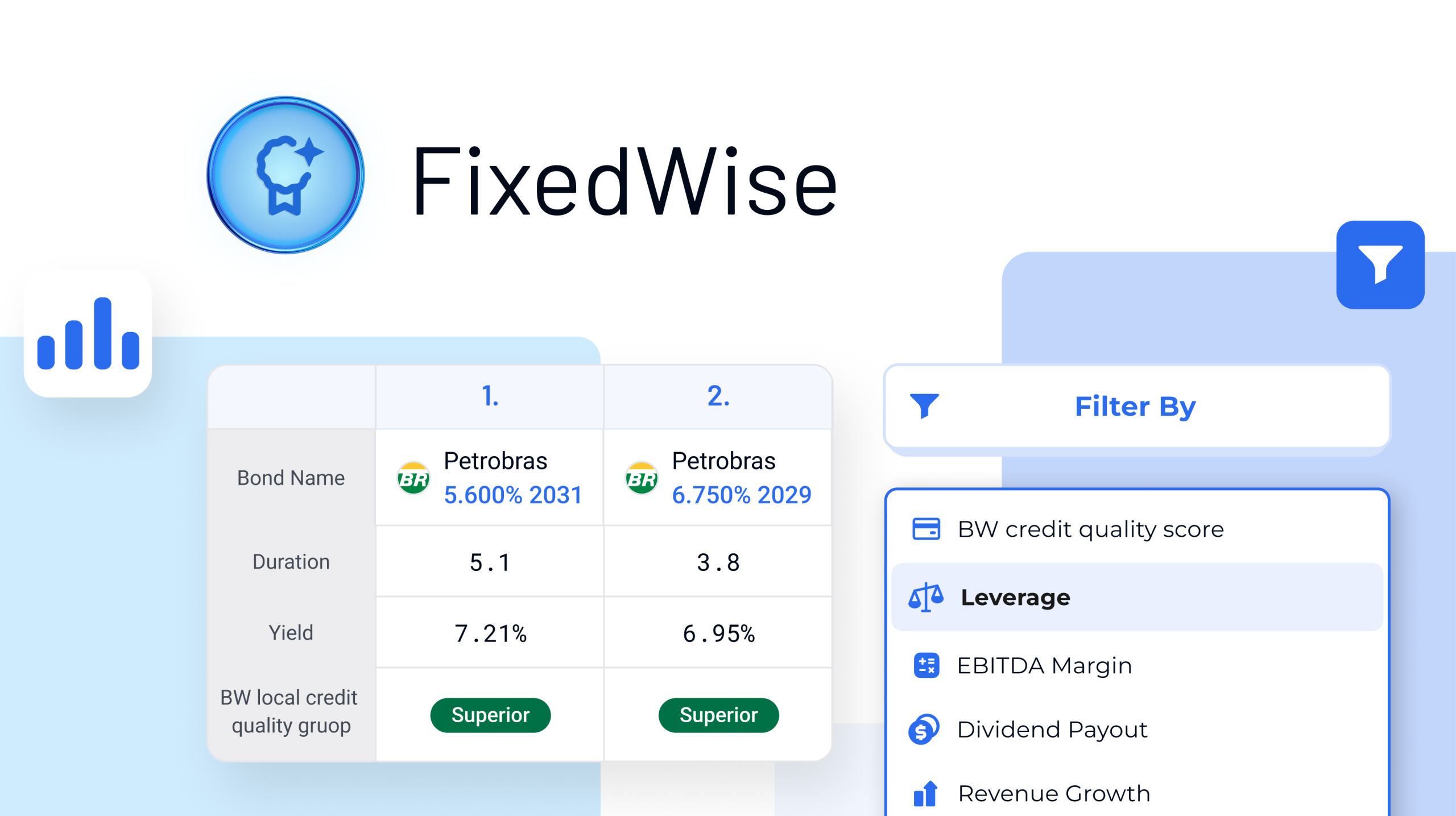
Investment Intelligence for Fixed-Income Assets: Unveiling FixedWise
Globally, bond markets continue to play a massive role in the investment industry, with investors ...

At the end of last month, we were privileged to host two veterans of the research industry for a wide ranging discussion on the future of investment intelligence. In our webinar – Investment Intelligence 2.0 – David Lenchus, Managing Director and Head of Institutional Equities Research at HC Wainwright, and Dato Neto, Former Managing Director of Banco Modal in Brazil and Founder of Eleven Research, joined Bridgewise CIO, Ilan Furman, to explore the ways data-driven research is changing the way the industry thinks about investment intelligence.
The webinar covered a broad range of subjects that examined the impacts the revolution in data-driven research is having on the industry, including the emergence of truly global trading markets, as well as the tools and solutions professionals in the industry are using with a special focus on AI.
We’ve prepared four key takeaways from the webinar to help you understand how data-driven research is pushing the industry forward. You can of course watch the full webinar below for all the insights.
“It is basically about deep-diving. I was always obsessed with the question, ‘how deep can we dive?’ Whether into equity, bond, or microeconomic analysis, it is all about how deep can you go? If you talk to fund managers and institutional investors, to even individual investors, we are all overwhelmed with information nowadays.
“So you deal with what you can reach and what you can structure. And then from an analytical standpoint, when we become able to dig deeper, being data-driven, being helped by structure, by models, and a huge amount of information, we see that it’s not about raw data. It’s about how you deal with data, how you process it, how fast and how deep you can go, and it changes the industry dramatically.”
“Let’s start with some numbers. In a year, we have about 241 business days to work, factoring in weekends, holidays, vacations, etc. That’s 241 days to work. Now imagine this, in those days an analyst covering 30-50 stocks, over four earnings cycles, and writing two notes per cycle, that’s eight notes per stock, so for just 30 stocks that’s 240 notes, right off the bat, in 241 days.”
Lenchus added that the above number doesn’t include any of the daily news flow or other content and analyst is expected to write during a year.
“Sell-side equity research is a labor intensive, high bandwidth task,” he continued. “In order to do that, you have to use these tools. And the change is that these tools are helping us be smarter, faster, and more efficient. And at the end of the day, that means productivity.”
“It is extremely tough to find companies that you can actually forecast holding a security over 10 years, 15 years, 20 years or something like that. We definitely don’t know how, and understand that we don’t know. I always respected way more what I don’t know, rather than what I do know. So considering what I cannot do, data helps a lot in understanding across different industries, where should I limit my horizon. And that is so important.
When we collect data, from a time horizon standpoint, data driven analysis can help us modulate my horizon. Where is the point in which forecasting ahead of that, increases my risk of making a big mistake? So now I can set different time horizons, based on the facts and the data I can see now, and that I can understand.”
Lenchus presented an example of a US based coffee company looking to expand its footprint into China, and the impact that would have on its business and anyone analyzing the company’s performance.
“That is a huge lift, as an analyst. Now you need to understand the regional market dynamics, customer behavior and tastes, local laws and regulations that could be a barrier to operations, global factors, political factors, etc. So doing that lift, of moving from a US market to a global market, looking at all of these dynamics – it’s too much.
“So what we’re doing, and what most firms are doing, are investing in tools, that are going to make you smarter, faster, and more efficient, by having those tools go out and gather the data, and summarize the data, and analyze the data, providing you with all of that information, so you can get up to speed, a lot quicker.”
Check out the full webinar here, and follow us on LinkedIn to hear about all of our upcoming events. To find out more about how Bridgewise can help investors adapt to rapidly evolving research needs, sign up for a demo today.

Globally, bond markets continue to play a massive role in the investment industry, with investors ...

By Gaby Diamant, BridgeWise CEO Earlier this month, Time Magazine named the “ Architects of AI ...

The Customer Japan Exchange Group (JPX) is one of the world’s leading financial ...